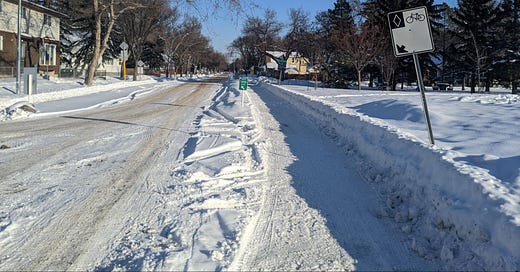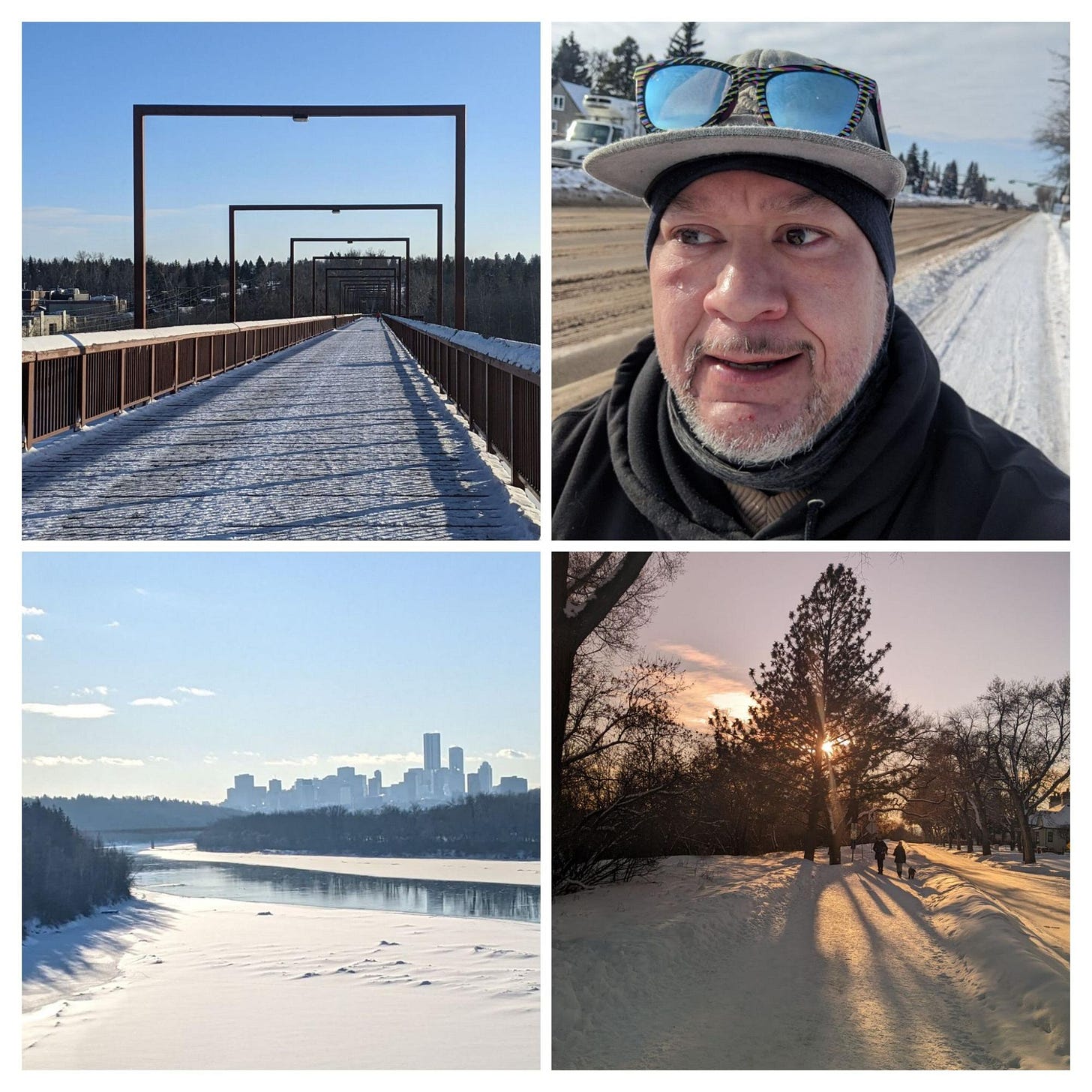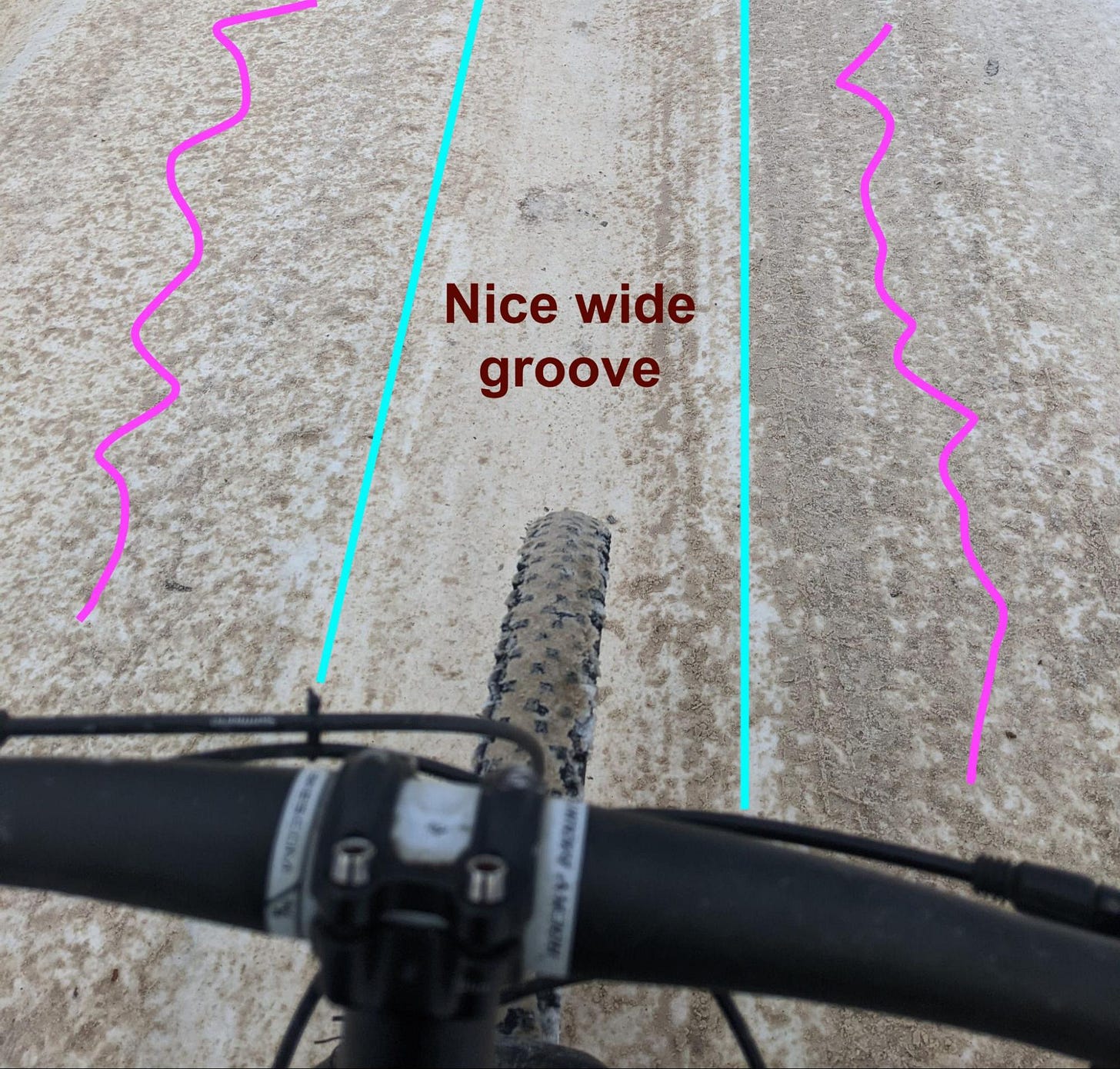Happy February, and boy, it’s been a cold one!
During the first week of this month, I went cycling around the north central area and beyond and assessed the bikeability conditions. The conditions were very good overall and the heavy snow had been cleared. However, I've encountered some difficulties over the past year when conditions made it impossible to clear the bike lanes properly. The City of Edmonton has committed to doing its best to plow and remove snow from bike lanes after a good snowfall, but it's not always practical
Each active pathway in Edmonton is assigned a priority level; 1, 2 or 3:
Priority 1 is cleared in 24 hours
Priority 2 is cleared in 3 days
Priority 3 is cleared in 14 days
There is a handy map available online to check the state of cleaning https://www.edmonton.ca/transportation/on_your_streets/neighbourhood-roads-winter
The best biking for me this winter has been the river valley’s main trails, a lengthy mixed use route with tamped down snow that wasn’t too icy. (including the ‘actual’ Rat Creek area).
My top tips
Your experience may vary, but these are my recommendations:
Rust is your bike's enemy: The road salt, snow, and sandy slush can wear down moving parts. It is important to clean your bike often, remember to wash it at the end of your ride. This, unfortunately, is best done inside where it is warm, which isn’t an option for everyone. If you are close to a wand wash, you can spray it down and put it inside when you get home. Be careful because water will disable parts of your bike if it freezes. Never spray a power wand wash directly into your moving parts, as it will remove the grease that is supposed to be there.
Chain: Clean and lubricate your chain with special winter chain lubricant.
Tires: Generally you need tires with good traction and not bald. Thick-tread mountain bike tires are a good option. Fat bike tires are the best, but a fat bike is a whole other investment.
For ice and snow, you may want studded tires. These tires have good traction and small metal protrusions that grip onto slippery patches. If you only have the budget for one, put it on the front. My problem with studded tires is when there is more pavement than ice — not only do you travel slower, but the studs tend to come off if they are just hitting rock all the time.
For lightly packed snow or slush, thin tires can actually be very effective cutting through the snow to reach the pavement, but they are much easier to misdirect on icy ruts.
Slightly deflate your tires for icy conditions as they give you extra grip … Slightly!
Have a back-up bike if possible, as you can keep your regular ride in top shape and your winter bike as more of your “beater.” You could also keep the winter bike with studded tires so you don’t have to change them out seasonally.
Carry sunglasses or goggles: The wind in your eyes can be distracting and uncomfortable. I also have a pair of clear wind blockers as well for low light conditions.
Dress appropriately: Carry layersyou can take off and put on as the temperature changes. Wear a waterproof, windproof, and breathable outer layer, and a warm moisture-wicking inner layer. On colder days, long underwear is a must. Keep your head warm with a thin but efficient sports toque (helmet liner or skull cap). Keeping your head warm is vital, but your helmet (if you are wearing one) also has to fit over it. The frigid wind from your speed can easily be the worst for your hands. I use two layers of gloves when necessary. If you are a dedicated winter rider, you may want to consider handlebar mitts!
Watch where you stop: Almost all my winter wipeouts happen when I am stopped on an icy intersection or get off my bike on a slick surface with my regular shoes on.
Watch the ruts! When riding on the road, the grooves made by other vehicles and bikes can be your worst enemy: when frozen, they can easily send you flying with anything less than the fattest tires. And if they are covered by snow, I recommend choosing another route. I avoid riding at night in the winter for this reason, as the paths are harder to see. If you really need to, ride on the sidewalk in low-trafficked areas. This may be frowned upon but, you may need to make an exception for your safety.
Carry a bus pass or change: Many things can go wrong on your ride — from flat tires, to bent frames or injuries. It's pretty easy these days to throw your bike on the front of the bus.
Use a rear fender/splash guard: For riding on main roads when the snow melts, as there have been some really mucky days this winter!
May warmer conditions prevail, and happy trails to you!
Sherridon Routley is a friend of the community who enjoys urban exploring every corner of the city by bicycle. Although he had previously owned a house south of the RCP district and understands the challenges of the area, he now resides in East Glenora.










Makes me want a winter bike. I enjoyed this tour and tips vicariously!
Nice work indeed, and a worthy public service. Thank you!